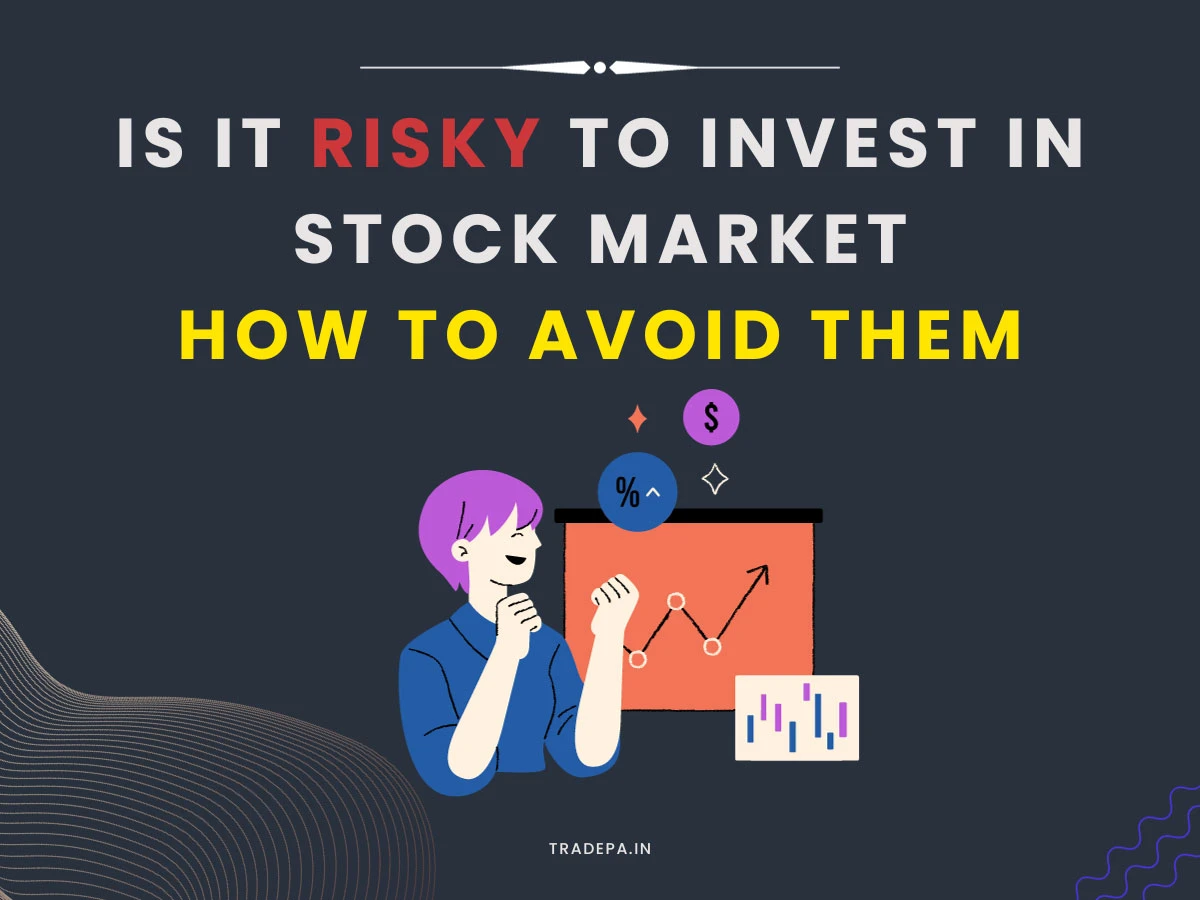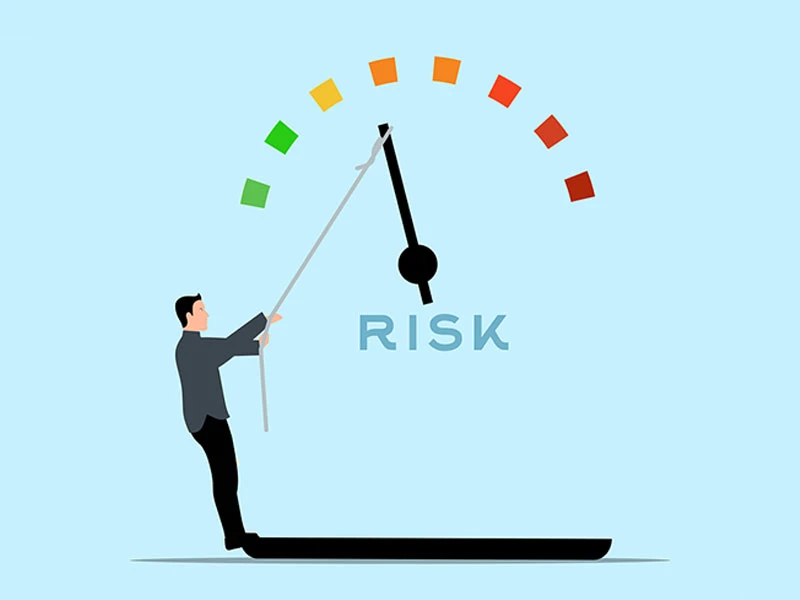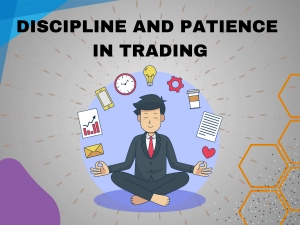Is it risky to invest in stock market and how to avoid them

Hey there, future investor! Have you ever wondered about diving into the stock market? You may have heard folks talking about it, and now you’re curious. Well, prepare for a thrilling journey because today, we’re unraveling the mysteries of investing in the stock market and those sneaky things called “risk in stock market investment.”
So, what’s the buzz all about? Imagine this: You’ve got a bit of spare cash, and you’re considering putting it into something that could grow and earn more money. That’s what investing in the stock market is all about - buying a piece of companies you believe will do well, and when they do, your investment grows, too. Sounds pretty exciting, right?
But hold up! Before you dive headfirst into this roller coaster of stock market adventures, let’s chat about something crucial, i.e., the risk. Yep, that word that’s like a caution sign on a road trip. Regarding investments in the stock market, risks are involved; it’s like deciding whether to carry an umbrella or not when the clouds look iffy.
In this article, we will walk through these risks, hold your hand through understanding them, and, most importantly, share some nifty ways to dodge, dance around, and manage them. So, buckle up, grab a snack, and let’s explore this wild ride of stock market investment risks together!
The Stock Market Investment
Investing in the stock market involves buying a small piece of a company. Imagine a pizza. When you invest, you're getting a slice of that pizza. The stock market is like a big market where people trade these pizza slices (or shares) of companies. When companies do well, the value of those shares goes up, and when they don't, it can go down.
The Risk in Stock Market Investment
Now, let's talk about risks. Investing in the stock market can be exciting, but it's essential to understand that it's not a guaranteed win. There are risks involved, just like with anything else in life. Understanding these risks is like knowing the weather before planning a picnic; it helps you prepare.
Types of Risks

Market Risk
Picture a wave at the beach. As waves go up and down, the stock market also goes through highs and lows. These waves can impact your investments; the prices of stocks can go up or down because of how the whole market is doing.
Here's a breakdown of what you need to know:
- Market Fluctuations: Just like waves rise and fall, the stock market does. This constant movement can impact the value of your investments.
- Economic Shifts: Imagine the market as a giant seesaw; it can tilt based on economic changes. Factors like interest rates, inflation, or economic growth can affect the market's behavior.
- Global Events: Think of the market as a giant web connected to worldwide events. International situations like political tensions or natural disasters can cause ripples in the market.
Company-Specific Risk
Each company is different, right? So, when you invest in one, you're taking a chance on how well that specific company will do. If a company isn't doing well, it can affect your investment.
Let's break it down:
- Performance Hiccups: Just like people have good and bad days, companies can too. If a company faces low sales or management issues, it can impact your investment in its stock.
- Industry Competition: Different companies play in different sandboxes. Competition within the industry, technological changes, or even a new player entering the market can affect a company's success.
- Management Decisions: Think of a company's management as the captain of a ship; decisions they make can steer the company's course. If there's a change in leadership or questionable choices, it might impact the company's value.
Liquidity Risk
Imagine trying to sell something, but no one wants to buy it. In the stock market, liquidity risk is similar when you might not find a buyer or seller for the shares you wish to trade.
- Marketability Concerns: Just like some items are more accessible to sell than others, certain investments may not have a readily available market. This makes it harder to sell quickly without affecting the price.
- Volume of Trading: Imagine trying to sell something in a quiet, deserted area compared to a bustling market. Low trading volumes in some investments mean fewer buyers or sellers, making transactions challenging.
- Bid-Ask Spread: Consider this the difference between the price someone's willing to pay and the price someone's ready to sell for. A wide gap here can indicate liquidity issues.
Systematic and Unsystematic Risks
Systematic Risks: Think of these as the general risks that affect the entire market. Economic changes, interest rates, or political instability impact all investments.
Unsystematic Risks: These are more like the risks specific to certain companies or industries. Company management, competition, or sudden technological shifts affect individual investments.
Factors Contributing to Investment Risks
Volatility
Have you ever been on a roller coaster? Like the excitement of the ups and downs, the stock market often exhibits volatility - prices can change fast and frequently. Let’s break it down: -
- Price Swings: Volatile investments experience frequent and significant price changes. They can go from high to low or vice versa quickly.
- Uncertainty Factor: Higher volatility means higher uncertainty about the future direction of an investment’s price. It can be both thrilling and nerve-wracking.
- Market Mood Swings: Volatility reflects how investors feel about the market. News, economic reports, or global events can influence it.
Economic Conditions
Imagine the stock market as a boat on the sea. Economic shifts are like the waves that can make the boat rock. Economic shifts can significantly impact market behavior.
- Interest Rates: Adjustments in interest rates by central banks can affect borrowing costs for companies and individuals, influencing spending and investment decisions.
- Inflation and Deflation: Rising prices (inflation) or falling prices (deflation) can impact consumer spending and affect company profits and stock prices.
- Economic Growth: Companies tend to perform better when the economy is booming. However, economic slowdowns or recessions can negatively impact corporate earnings and the stock market.
Political and Regulatory Factors
Governments make rules that can impact the stock market. Political decisions and regulations can influence how companies operate, and the market reacts. Here's a breakdown:
- Policy Changes: New laws or regulations by governments can affect industries and companies, influencing their operations and profitability.
- Political Instability: Uncertainty due to political events, elections, or geopolitical tensions can create market volatility and impact investor confidence.
- Global Trade Policies: Trade agreements or disputes between countries can affect international businesses, leading to changes in stock prices.
Strategies to Mitigate Risks in Investment
Diversification
Think about having different flavors of ice cream instead of just one. Diversification in investing refers to spreading your investments across various companies or industries. If one doesn't do well, the others might balance it out.
Risk Tolerance Assessment
Imagine a ride at an amusement park - some people love the thrill, while others prefer something calmer. Understanding your risk tolerance is like knowing what kind of ride you enjoy. It helps determine how much risk you're comfortable taking with your investments.
Research and Due Diligence
Before buying a new phone, you'd probably check reviews and compare models. Similarly, when investing, doing research and due diligence means checking how well a company is doing, looking at its history, and understanding its future prospects.
Long-Term Investment Approach
Imagine planting a tree. You don't expect it to grow tall overnight, right? Long-term investing is similar—it's about patiently waiting and letting your investments grow steadily.
Tools and Resources for Risk Management
Stop Loss Orders
Setting a stop-loss order is like having a safety net. It aids in safeguarding your investment by triggering automatic selling if the price falls to a certain point, preventing more significant losses.
Hedging Strategies
Think of hedging like having an umbrella on a rainy day. It's about using options or insurance to protect your investments against potential losses.
Investment Advisors and Tools
Just like having a coach in sports, professional advice and investment tools can guide you. They can offer valuable insights and tools for effective risk management.
Learning from Historical Market Trends
Looking at the past helps predict the future, right? Analyzing historical data in the stock market can provide insights into how different strategies work in managing risks.
Common Mistakes to Avoid

Overtrading
Imagine buying too many snacks and not being able to finish them before they go bad. Overtrading is similar to excessive buying and selling, which can lead to losses.
Ignoring Diversification
Putting all your eggs in one basket might seem convenient, but if that basket falls, you lose everything. Ignoring diversification means not spreading your investments, which can be risky.
Emotional Decision Making
Imagine deciding on dinner when you're super hungry; you might choose something terrible for you. Emotional decision-making in investing can lead to choices that might not be the best for your investments.
Continuous Learning and Adaptation
Like updating your phone for new features, staying informed about market changes is crucial. It helps you make smarter decisions.
Remember playing a game and changing strategies when it didn't work? Similarly, adapting your investment strategies to evolving market conditions is essential for success.
Conclusion
Investing in the share market can sometimes feel akin to setting sail on an adventurous journey. We've unraveled the mysteries of risks lurking in these financial journeys, understanding that risks are involved. But fear not, fellow explorers; armed with knowledge, we're better prepared to navigate this terrain.
Remember, risks like market fluctuations, company-specific challenges, or economic and regulatory changes are part of the investment landscape. However, we can avoid some of these pitfalls armed with intelligent strategies. Diversification, understanding our risk tolerance, and staying informed are our trusty tools in this expedition.
The stock market is indeed a rollercoaster ride with twists and turns. But with patience, a long-term perspective, and a keen eye on managing these risks, we can ride these waves and harness the opportunities it presents.
So, fellow adventurers, armed with our newfound knowledge, let's set sail into this exciting realm of investments, knowing that while risks exist, so do the rewards for the informed and the brave. Happy investing!








